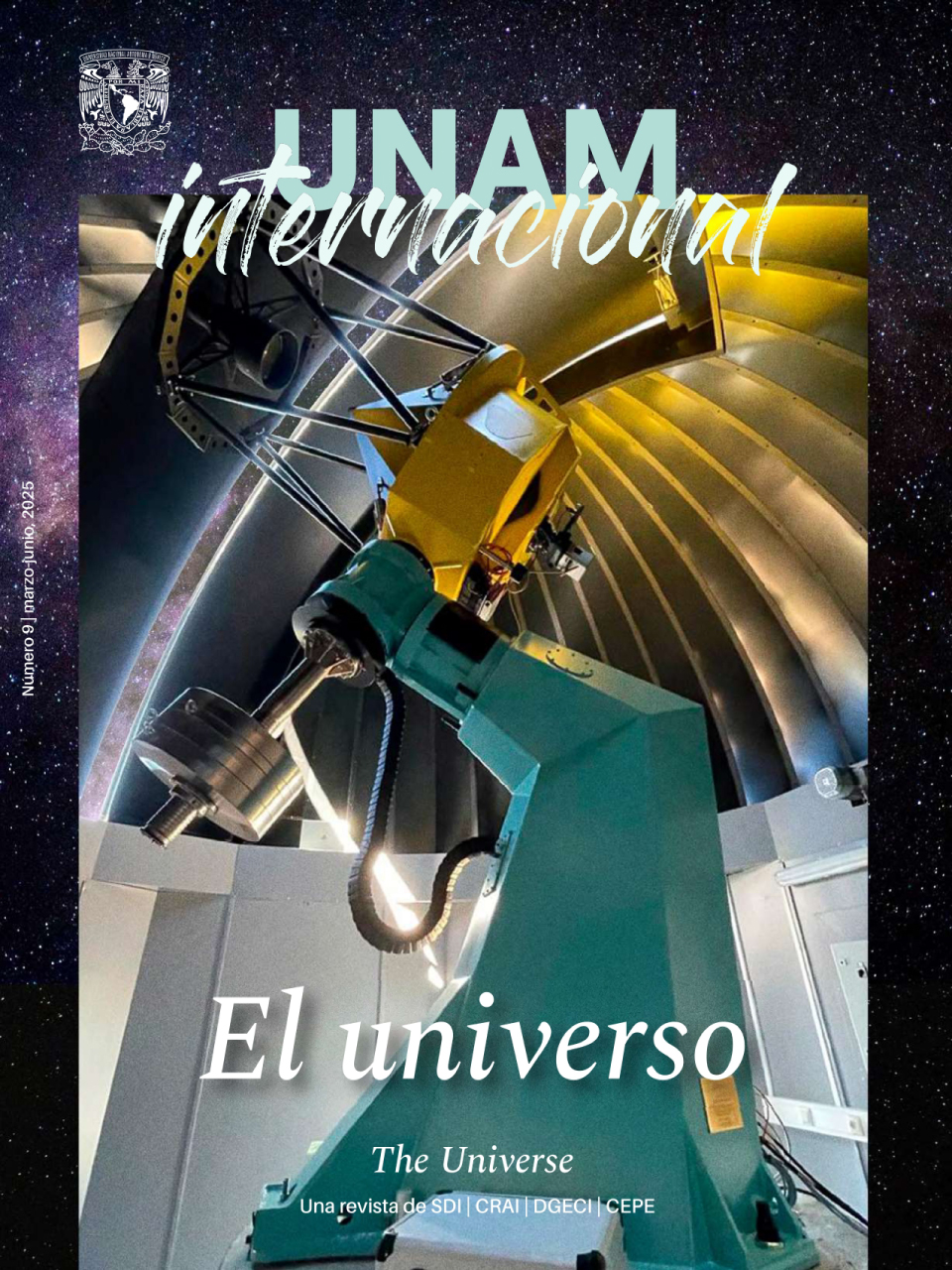31-03-2025
A Space— Astrobiologic—Laboratory without Borders
Dr. Rafael Navarro González founded the Laboratory of Plasma Chemistry and Planetary Studies (LQPyEP) at the Institute of Nuclear Sciences (ICN), with the support of UNAM and the Inter-American Development Bank (IDB). The laboratory had equipment and analytic instruments with the latest technology, with which it was possible to prepare gas mixtures that would emulate the atmosphere of any planet or satellite in our Solar System. It also had the necessary instrumentation for the analysis of the gas components generated when said simulated atmospheres are subjected to energy sources that mimicked those in celestial bodies at the laboratory. Projects focused on understanding the chemical processes that occurred in the atmosphere of early Earth and Titan, a moon of Saturn. The first results showed that when subjecting the simulated atmospheres to different energy sources, they could form a variety of organic compounds—hydrogen cyanide among them, a potentially very important compound in the synthesis of prebiotic molecules that eventually led to life on Earth. The obtained results allowed academic collaboration with diverse research groups such as Nobel Prize Mario Molina’s and Professor François Raulin’s at Paris-East Créteil University (UPEC), and a member of the European Space Agency (ESA).In the following decades the laboratory acquired cutting-edge equipment to emulate chemical processes like the ones that occur in the hydrothermal vents of the Earth and Europa, moon of Jupiter. This allowed new collaborations with NASA scientists like Wanda L. Davis and Christopher P. McKay, which would mark the start of the participation of the LQPyEP in scientific research projects related to the search for life in our Solar System.
One of the most significant contributions the LQPyEP made was to replicate the Viking program’s protocols to detect life on the Martian surface in the Atacama desert, Chile. The results were published in 2003 in Science, highlighting the constraints of the techniques used and the fact of having located the best Martian regolith analog in the heart of Atacama, a place currently used to test instrumentation that will be sent on exploration missions to the Red Planet.
When the Phoenix spacecraft detected perchlorates in the Martian Arctic in 2008, it was determined that future missions to the Red Planet should not use thermal analysis methods for the detection of organic material since those techniques suffer from interference by the iron oxides and perchlorate in Martian regolith.
But thermal methods were not fully discarded after such experiences and the LQPyEP acquired one of the most thoroughly equipped thermal analysis appliances. It was paired to mass spectrometry with the goal of detecting sedimentary minerals emulating the analysis made by NASA mission Curiosity. This made it possible to contribute to the detection of nitrates and carbonates whose presence indicated the existence of liquid water in the past on Mars.
The infrastructure of the LQPyEP and the great achievements obtained in the last decades resulted in an invitation to collaborate with the NASA mission Mars 2020 —today known as Perseverance— and ESA mission Rosalind Franklin. Unfortunately, in January 2021, the COVID-19 epidemic took one of our country’s leading scientists in astrobiology and the head of the LQPyEP. NASA acknowledged his contributions and named a Martian hill in Mount Sharp —Northeast of the Gale crater—after Dr. Navarro.
Paola Molina Sevilla has a master’s degree from UNAM’s Postgraduate Program in Earth Sciences. She joined the LQPyEP team in 2011 as an academic technician, focusing her work on research related to Mars analog sites, terraforming, and the search for life on Mars.
José Guadalupe de la Rosa Canales has a master’s degree from UNAM’s Faculty of Chemistry. He joined the LQPyEP as an academic technician in 2005. He has developed research projects about Titan—the biggest moon of Saturn, hydrothermal vents in Europa, and the search for life on Mars.
José Guadalupe de la Rosa Canales has a master’s degree from UNAM’s Faculty of Chemistry. He joined the LQPyEP as an academic technician in 2005. He has developed research projects about Titan—the biggest moon of Saturn, hydrothermal vents in Europa, and the search for life on Mars.
